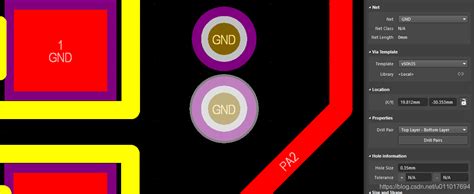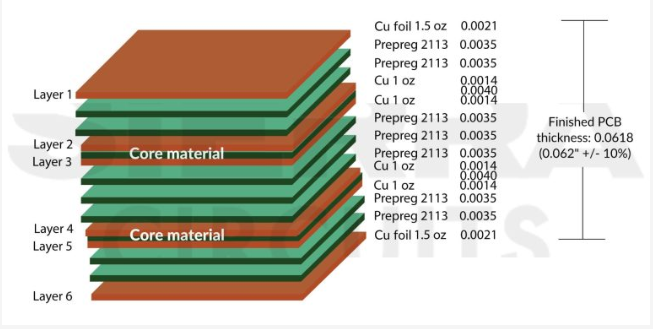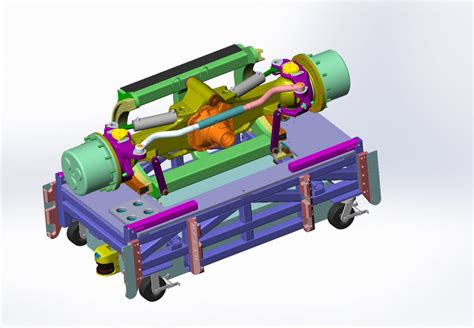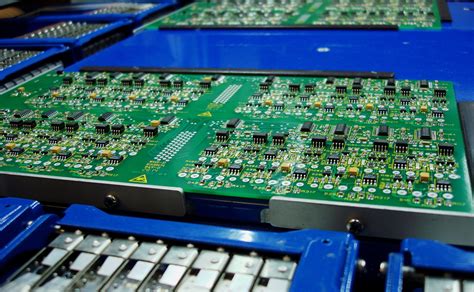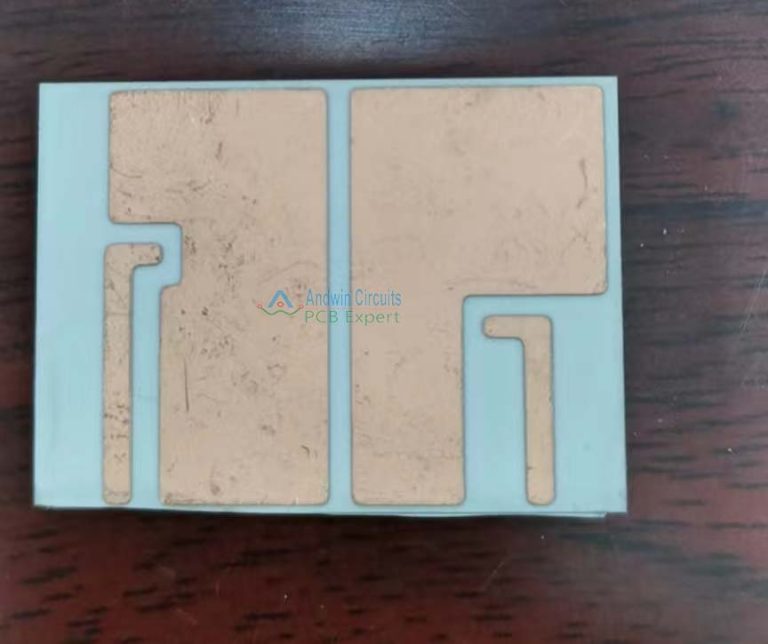Revolutionizing Electronics: The Rise of Additive PCB Technology
Key Takeaways
As you delve into the world of additive PCB technology, you will find that it represents a pivotal shift in PCB manufacturing practices. Unlike traditional methods that often limit design flexibility, additive processes allow for intricate designs that were once deemed impossible. This innovation not only facilitates more complex geometries but also significantly minimizes the PCB manufacturing cost by reducing material waste through precise deposition techniques. As a result, you can expect PCB manufacturing companies to enhance their offerings, providing products tailored to specific requirements while ensuring sustainability. Moreover, with the capabilities of additive technology, your devices can achieve higher performance levels due to optimized circuit layouts and reduced signal loss. This transformation in the PCB manufacturing business landscape is poised to unlock new avenues for growth and efficiency, making it crucial for anyone involved in electronics to grasp the significance of these advancements.
Introduction to Additive PCB Technology
In recent years, additive PCB technology has emerged as a game-changer in the pcb manufacturing landscape. This innovative approach allows for the creation of high-performance circuit boards through additive processes rather than the traditional subtractive methods. As a result, you can achieve greater design flexibility, which is critical for meeting the complex demands of modern electronics. With this shift, pcb manufacturing companies are now capable of producing intricate designs with enhanced precision and reduced lead times.
One significant advantage of additive techniques in pcb manufacturing is their ability to minimize waste. Traditional methods often involve etching layers off a substrate, which can lead to significant material loss—something that additive processes aim to reduce substantially. This not only lowers the overall pcb manufacturing cost but also aligns with global sustainability goals by promoting more eco-friendly production practices.
Moreover, as you explore this technology, it’s important to recognize that it does not just enhance performance but opens new avenues for innovation in electronic device design. By leveraging additive PCB techniques, businesses can stay ahead in the competitive pcb manufacturing business, taking advantage of rapid prototyping and customization capabilities that were previously challenging to achieve.
“The key to success in electronics lies in embracing change and innovation.”
The Manufacturing Process of Additive PCBs
The manufacturing process of additive PCBs represents a significant evolution in the field of pcb manufacturing. Unlike traditional subtractive methods, which rely on etching away excess material, additive manufacturing builds the circuit layers by adding materials only where they are needed. This approach not only fosters intricate designs but also enhances the overall efficiency of the pcb manufacturing companies involved. You will discover that through selective material deposition, additive PCBs reduce pcb manufacturing costs by minimizing waste and optimizing the use of raw materials. Moreover, the combination of precision and flexibility in this process allows for complex geometries that were previously difficult or impossible to achieve. As you delve deeper into this subject, consider how such innovations may impact your own pcb manufacturing business, especially in terms of meeting modern electronic demands while staying environmentally conscious. With these advancements, you can expect improved manufacturability and performance in your products while maintaining a competitive edge in an ever-evolving industry landscape. For further insights into additive PCB technology, resources can be found at Andwin PCBA.
Design Flexibility: Unlocking New Possibilities
In the landscape of PCB manufacturing, the advent of additive PCB technology is ushering in a new era of design flexibility. With traditional methods, manufacturers often faced limitations in creating complex geometries or integrating multiple functionalities into a single board. However, with additive processes, you can now design PCBs with intricate patterns and layers that were previously unachievable. This transformative approach allows PCB manufacturing companies to customize designs for specific applications, resulting in components that more effectively meet your unique needs. Furthermore, the streamlined production process can significantly reduce PCB manufacturing costs, enabling you to explore innovative ideas without being hindered by budget constraints. As a result, your products can benefit from enhanced performance characteristics while maintaining reduced lead times in production. By leveraging these advancements, your PCB manufacturing business can not only adapt to market demands more swiftly but also push the boundaries of electronic device capabilities, unlocking a multitude of possibilities for future development and innovation.
Environmental Impact: Reducing Waste in Production
In the realm of pcb manufacturing, the transition to additive PCB technology presents a significant opportunity to minimize environmental footprints associated with traditional processes. Traditional pcb manufacturing companies often face challenges related to material waste—excess substrates and chemicals that not only increase production costs but also contribute to environmental degradation. In contrast, additive PCBs are crafted using layer-by-layer techniques that are inherently more efficient. By applying materials only where needed, you significantly reduce the overall amount of waste generated during production. This not only lowers your pcb manufacturing cost but also enhances sustainability practices within your pcb manufacturing business. Moreover, as you adopt these innovative methods, you align your operations with growing demands for environmentally responsible practices in the electronics industry, appealing to consumers who prioritize sustainability. Consequently, embracing additive PCB technology not only fosters design flexibility and performance improvements but also plays a crucial role in reducing overall waste generated throughout the production lifecycle. Through this shift, companies can carve out a competitive edge while contributing positively to the environment.
Enhancing Performance: How Additive PCBs Improve Devices
The introduction of additive PCB technology is fundamentally enhancing the performance of modern devices in several significant ways. First and foremost, by optimizing the pcb manufacturing process, you can achieve a level of precision that was nearly impossible with traditional methods. This increased precision means that smaller, more intricate designs can be realized with ease, allowing you to develop devices that consume less power while delivering high performance. Additionally, the pcb manufacturing cost is notably reduced due to the minimized material waste inherent in additive processes. This efficiency not only supports cost-effective production but also encourages sustainability in the pcb manufacturing business, as reduced waste translates to a lower environmental impact.
Furthermore, you can now leverage enhanced design flexibility through additive techniques. With traditional subtractive methods, modifying a layout could be both time-consuming and costly, often involving significant rework or even complete redesigns. However, additive methods allow you to easily iterate on designs, making it possible to experiment with advanced layouts that can lead to improved thermal management, better signal integrity, and overall heightened device reliability.
In this rapidly evolving electronic landscape, staying competitive means adopting innovative strategies—ultimately leading to a new era of flexibility and performance within your devices through additive PCBs.
Case Studies: Successful Implementations of Additive PCB
The emergence of additive PCB technology is revolutionizing the landscape of electronics, with various PCB manufacturing companies harnessing its innovative capabilities to enhance their product offerings. Take, for example, a recent case study involving a leading tech firm that leveraged this technology to streamline their PCB manufacturing process. By adopting additive methods, they achieved a significant reduction in PCB manufacturing costs, allowing for lower prices without compromising quality. This shift not only enabled them to outpace competitors but also provided them with the design flexibility to rapidly prototype new devices tailored to market demands. Another notable instance can be seen in the automotive sector, where a manufacturer successfully implemented additive PCBs to develop more compact and efficient electronic controls. This implementation enhanced performance by reducing the physical footprint while simultaneously improving heat dissipation properties. Such successful case studies illustrate how adopting additive PCB techniques can benefit both your PCB manufacturing business and its overall sustainability by minimizing waste throughout production phases. As you explore these advancements, you will see how they provide actionable insights into the future of electronics, paving the way for smarter devices that meet modern needs with enhanced efficiency and reduced environmental impact.
Future Trends in Additive PCB Technology
As you look toward the advancements in additive PCB technology, several trends are poised to shape the future of the PCB manufacturing landscape. One significant trend is the continuous improvement in production efficiency offered by newer techniques that permit more precise printing of electronic components directly onto substrates. This not only enhances design flexibility but also drastically reduces PCB manufacturing cost by minimizing the material waste associated with traditional subtractive processes. Moreover, as more PCB manufacturing companies adopt automation and smart technologies, you can expect an acceleration in production rates and a decrease in lead times, catering to the demands of an ever-competitive market.
Another exciting trend is the development of advanced materials that enhance conductivity and thermal management properties. These innovations are vital for high-performance applications where reliable connectivity is crucial. You may find that future PCB manufacturing business models will increasingly emphasize sustainability, implementing eco-friendly practices through the use of biodegradable materials and reduced energy consumption during production.
As you navigate these trends, consider how they can benefit your projects and enhance your product offerings. Staying informed about these developments will empower you to leverage cutting-edge solutions that push the boundaries of what’s currently possible in electronic design and manufacturing. With a keen understanding of these trends, you pave the way for your projects to thrive in an evolving landscape shaped by additive PCB technology innovations.
Conclusion: The Next Era of Electronics Manufacturing
Additive PCB technology is ushering in a transformative period within the electronics manufacturing landscape. As you explore this evolution, you will notice how pcb manufacturing processes are becoming more sophisticated and adaptable. PCB manufacturing companies that embrace additive techniques can significantly lower their pcb manufacturing cost by eliminating waste and optimizing material usage, thus increasing their competitiveness in a crowded market. You will see that the innovative layer-by-layer approach allows for intricate designs that traditional methods struggle to achieve, granting you unparalleled flexibility in your projects. This breakthrough not only enhances device performance but also contributes to a more sustainable pcb manufacturing business, aligning with growing consumer and regulatory demand for eco-friendly practices. The future is clearly leaning towards these advancements, encouraging professionals in the field to integrate additive techniques into their workflows as they prepare for this next era.
Conclusion: The Next Era of Electronics Manufacturing
In summary, the emergence of additive PCB technology is not just another trend in the pcb manufacturing landscape; it represents a fundamental shift in how devices are designed and produced. As you reflect on the advancements we’ve discussed, consider how pcb manufacturing companies are increasingly adopting these innovative techniques to provide greater design flexibility while also minimizing their environmental footprint. This transformation not only lowers the pcb manufacturing cost, making it more economically viable for many businesses, but it also allows for a more efficient use of materials with less waste. Engaging with additive PCB technology empowers your pcb manufacturing business to stay competitive and relevant in a fast-evolving marketplace. You’re not merely observing these changes; by integrating additive processes into your operations, you position yourself at the forefront of an exciting new era in electronics manufacturing. The future holds immense possibilities, and embracing this innovation could define your success in the years to come.
FAQs
What is additive PCB technology?
Additive PCB technology is a revolutionary approach to PCB manufacturing that allows for the creation of printed circuit boards using additive processes. This means layers of material are added rather than subtracted, offering greater design freedom.
How does additive PCB technology improve design flexibility?
By utilizing additive processes, you can achieve intricate designs that traditional PCB manufacturing methods may find challenging or impossible. This flexibility enables you to innovate and push the boundaries of electronic device design.
What are the environmental benefits of using additive PCBs?
Additive PCB technology significantly reduces waste in production, making it a more sustainable choice compared to conventional methods. It translates into lower PCB manufacturing costs, as less material is discarded during the process.
How does additive technology enhance device performance?
With its capacity for precision and detail, additive PCBs can improve the overall performance of electronic devices. The decreased size and weight contribute to better efficiency and functionality in your designs.
Why should I consider switching to additive PCB technology?
As you evaluate your options among various PCB manufacturing companies, consider that adopting additive techniques positions your PCB manufacturing business at the forefront of innovation. This shift not only enhances product capabilities but also offers potential cost savings over traditional methods.

